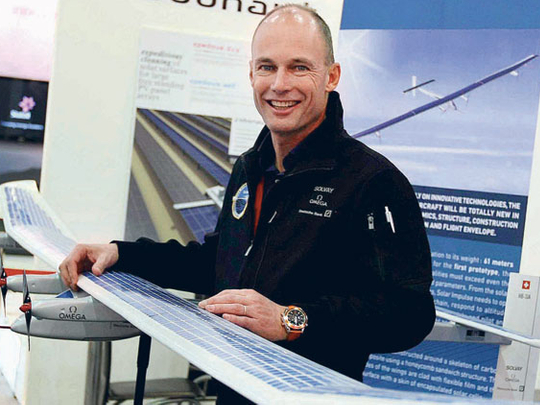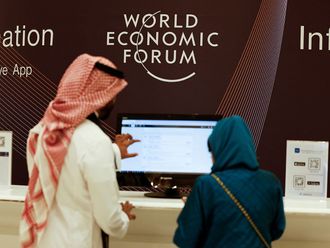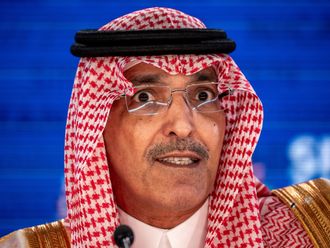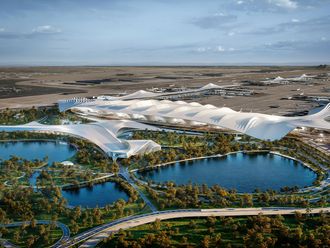
Abu Dhabi : His plane, the symbol of his dream to fly around the world without using any fuel, ensures he stays slim and fit.
Bertrand Piccard, a 51-year-old Swiss, is a psychiatric doctor and aeronaut by training, but an adventurer by passion.
Over a decade ago, Piccard alone ventured on the first non-stop circumnavigation of the earth in a balloon. However, 19 days, 21 hours and 47 minutes later, the balloon had to be landed before completion of the mission when it ran out of fuel.
But Piccard refused to give up and came up with the idea of flying non-stop around the world without any fuel.
Today, the mission is a step closer as he has designed a solar airplane that could, in theory, perpetually stay in the air using solar power. The plane is named Solar Impulse.
He hopes to realise his dream by 2012, but for that he also needs to maintain his weight as any gain would mean greater load, which could affect the challenge.
"Solar Impulse took us six years to build. It can fly on only solar energy because it is built with very little weight and needs little energy to remain airborne," said Piccard in an interview with Gulf News. He is in Abu Dhabi as a speaker at the World Future Energy Summit.
The size of an aircraft, the weight of a car and the power of a scooter, he said, describing Solar Impulse.
Solar energy stored during the day will help the plane fly through the night. Then with sunrise, the batteries will get re-charged.
"This way you can stay in the air perpetually with no fuels and zero emissions."
The plane uses about 12,000 solar cells, rechargeable lithium batteries and four electric motors to drive the propellers.
The goal is to fly around the world to demonstrate the incredibly high potential of new technologies, renewable energies and energy efficiency and to encourage as many people as possible to do the same in their daily lives, he said.
"We could already save so much energy if we have the will to do it," he noted, adding that energy savings could be achieved everywhere from cars to air conditioners to computers.
Back in 1999, on his first balloon trip around the world, he took four tonnes of liquid propane with him and landed midway through the journey with just 40 kilogrammes.
"I really felt it in my gut.. what it feels like to be dependent on fuel."
Thus, the solar plane project began.
For now, it is still a prototype that requires extensive testing. The plane underwent its first flying test last December. Its first 36-hour flight is scheduled for later this year.
If all goes well, the plane will embark on a trip around the world in 2012. Over 20 days, the plane will stop after every five days and the pilot will change. The co-pilot will be André Borschberg, CEO of Solar Impulse.
Piccard envisions the solar plane becoming a commercial model some day in the future.
His response to sceptics: "When Charles Lindbergh crossed the Atlantic in 1927, his aircraft was full of gasoline and he was alone on board. And everybody thought that to fly across the Atlantic you would have to be a pilot yourself, but 25 years later we had 200 passengers cross the Atlantic on every plane."












